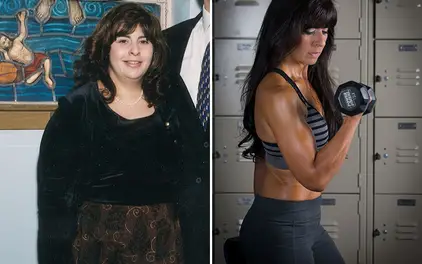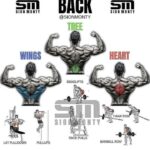Achieve a 1 Month Body Transformation Female plan with beginner workouts, nutrition tips, and strategies to build strength and tone your body effectively.
Introduction: Setting the Stage for Transformation
Achieving a successful 1-month transformation requires more than just determination—it demands a strategic approach to fitness. By understanding and incorporating various types of workouts, you can create a balanced routine that accelerates results. Each workout type plays a unique role, targeting specific fitness goals while fostering overall well-being.
The Importance of a Well-Rounded Workout Plan

A diverse workout routine ensures that no aspect of fitness is neglected. Strength, endurance, flexibility, and recovery all contribute to holistic success. By balancing different workout modalities, you avoid overtraining specific muscle groups while promoting a sustainable fitness lifestyle.
Strength Training: Building a Solid Foundation
Strength training is pivotal for muscle growth and metabolic efficiency.
Benefits of Strength Training
Strength training increases lean muscle mass, which boosts your resting metabolic rate. It also enhances joint stability and improves overall body composition.
Key Exercises for Beginners
Focus on compound movements like squats, deadlifts, bench presses, and rows. These exercises target multiple muscle groups, providing maximum benefit in minimal time.
Structuring Your Strength Workouts
Incorporate a mix of lower and upper body exercises. Begin with lighter weights to master form, gradually increasing resistance to challenge your muscles.
Cardiovascular Training: Boosting Endurance and Heart Health
Cardio workouts are essential for improving stamina and burning calories.
Types of Cardio Workouts
Engage in steady-state cardio like jogging or brisk walking for fat burning, or try high-intensity interval training (HIIT) for quick bursts of intense activity followed by short recovery periods.
How to Incorporate Cardio Effectively
Aim for 3-5 sessions per week, alternating between low and high-intensity workouts. Combine cardio with strength training for a balanced routine.

Flexibility and Mobility Work: Enhancing Range of Motion
Flexibility exercises improve movement efficiency and reduce injury risk.
Benefits of Stretching and Mobility Training
Stretching alleviates muscle tension and improves posture. Mobility exercises enhance joint function and help in performing strength exercises with proper form.
Types of Flexibility Workouts
Incorporate static stretching after workouts and dynamic stretching during warm-ups. Practices like yoga or Pilates can serve as dedicated flexibility sessions.
Core Workouts: Strengthening Your Center
A strong core improves balance, stability, and overall strength.
Core-Specific Exercises
Focus on planks, Russian twists, leg raises, and mountain climbers. These exercises target multiple core muscles, fostering functional strength.
Importance of Core Training in All Workouts
A stable core supports proper form in both strength and cardio exercises, reducing the risk of injury and enhancing performance.
Active Recovery and Rest Days: The Unsung Heroes
Rest is as crucial as activity for achieving results.
Benefits of Active Recovery
Engaging in light activities like walking or stretching on rest days helps increase blood flow and reduce muscle soreness.
How to Structure Rest Days
Include at least one full rest day per week. Use active recovery on other low-intensity days to maintain momentum without overexertion.
Mixing and Matching: Creating a Weekly Routine
A well-designed weekly plan combines all workout types to target different fitness goals.
Sample Weekly Workout Schedule
- Monday: Strength training (upper body focus)
- Tuesday: Cardio (steady-state or HIIT)
- Wednesday: Flexibility and core work
- Thursday: Strength training (lower body focus)
- Friday: Cardio (alternate type from Tuesday)
- Saturday: Active recovery (light yoga or walking)
- Sunday: Full rest
Adapting the Plan to Your Needs
Personalize the schedule based on your fitness level and availability. Ensure a balance between intensity and recovery.
Tips for Sustaining Momentum
Staying consistent over a month requires more than physical effort.
Setting Realistic Goals
Define measurable objectives, such as completing a certain number of push-ups or running a specific distance. Celebrate small wins to maintain motivation.
Tracking Progress
Keep a workout journal to monitor improvements in strength, endurance, and flexibility. Visualizing progress reinforces commitment.
Conclusion: Your Blueprint for Success
By diversifying your workout routine with strength, cardio, flexibility, and recovery, you create a holistic plan for success. In one month, this strategic approach can help you build strength, improve stamina, and develop lasting fitness habits. Embrace the journey, celebrate progress, and keep evolving your routine for continued growth.
FAQ
What is a realistic goal for a 1-month body transformation for females?
A realistic goal is to build strength, improve endurance, and notice changes in body tone. Weight loss or muscle gain might range from 4-8 pounds depending on effort and consistency.
What type of exercises are best for beginners during a 1-month transformation?
Compound movements like squats, lunges, and push-ups, paired with low-impact cardio such as walking or cycling, are ideal for beginners. These exercises target multiple muscle groups effectively.
How should a female beginner plan her diet for a 1-month body transformation?
Focus on balanced meals with lean proteins, whole grains, healthy fats, and plenty of vegetables. Stay hydrated and consider smaller, frequent meals for steady energy levels.
Can significant strength gains be achieved in just one month?
Yes, beginners can experience noticeable strength gains due to neuromuscular adaptations, even within a short time frame like one month.
How often should workouts be performed during a 1-month transformation program?
Aim for 3-5 workout sessions per week, allowing at least one day of rest or active recovery to prevent overtraining and promote recovery.
What role does rest and recovery play in a 1-month body transformation for women?
Rest and recovery are crucial for muscle repair, growth, and overall performance. Without proper recovery, progress may plateau, or injuries can occur.
What equipment is necessary for a 1-month body transformation at home?
Basic equipment like resistance bands, a set of dumbbells, or even bodyweight exercises can suffice. A yoga mat can also be useful for comfort and stability.
How can a female beginner stay motivated throughout the 1-month transformation journey?
Set small, achievable goals, track progress, and celebrate milestones. Joining a supportive community or finding a workout partner can boost accountability and morale.




